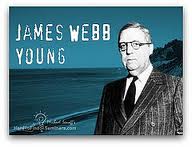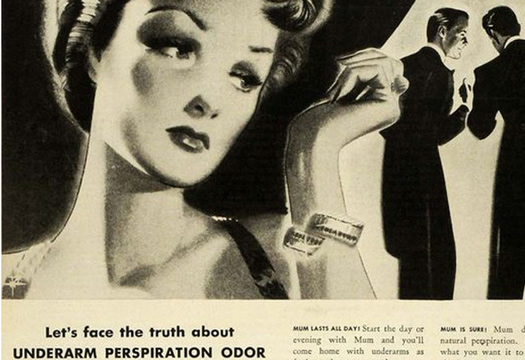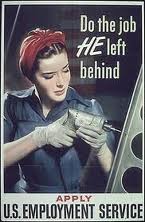 In 1941 600 members of the American advertising industry gathered in Hot Springs, Virginia. Throughout the Depression advertising, both as a separate industry and as part of the free enterprise system, had been subject to increasing criticism and challenge. In a rousing speech on the final day James Webb Young of J. Walter Thompson summed up the problems that threatened advertising and business generally:
In 1941 600 members of the American advertising industry gathered in Hot Springs, Virginia. Throughout the Depression advertising, both as a separate industry and as part of the free enterprise system, had been subject to increasing criticism and challenge. In a rousing speech on the final day James Webb Young of J. Walter Thompson summed up the problems that threatened advertising and business generally:
And so we come to the area that troubles us most, where all is not quiet along the Potomac. I have suggested to you that the dangers that we see are not dangers to advertising per se, but dangers to the whole business structure of which we are a part... Here is the crux of the problem… What will it profit us to win the war of advertising and lose the war of business.
 Young, who as a young advertising copywriter in 1919 had made thousands of women conscious of their underarm sweat in the services of deodorant manufacturer, Odorno (Odor? Oh No!), proposed that ‘public service’ advertising be undertaken as part of a public relations strategy to restore the image of advertising and of business more broadly.
Young, who as a young advertising copywriter in 1919 had made thousands of women conscious of their underarm sweat in the services of deodorant manufacturer, Odorno (Odor? Oh No!), proposed that ‘public service’ advertising be undertaken as part of a public relations strategy to restore the image of advertising and of business more broadly.
We have within our hands the greatest aggregate means of mass education and persuasion the world has ever seen—namely, the channels of advertising communication. We have the masters of the techniques of using these channels. We have power. Why do we not use it?
In response to Young’s speech the audience rose and clapped enthusiastically and pledged their support from the floor. However less than a month later America declared war on Japan. In response Young helped to found the War Advertising Council, representing almost all the trade associations of the advertising and allied industries, to help with the war effort.
 Throughout the war years the War Advertising Council carried out hundreds of publicity campaigns for the government and the war effort using donated time and space to an estimated value of $1 billion. Sponsorship of the patriotic wartime advertising programs improved the advertising industry’s public image. In consequence the Council reorganised and continued its public service advertising after the war under the new name of the Advertising Council Inc. in the expectation that it could thereby maintain or advance a philanthropic image for both advertising and business. Its goal was to address ‘societal problems through influencing and informing public opinion’.
Throughout the war years the War Advertising Council carried out hundreds of publicity campaigns for the government and the war effort using donated time and space to an estimated value of $1 billion. Sponsorship of the patriotic wartime advertising programs improved the advertising industry’s public image. In consequence the Council reorganised and continued its public service advertising after the war under the new name of the Advertising Council Inc. in the expectation that it could thereby maintain or advance a philanthropic image for both advertising and business. Its goal was to address ‘societal problems through influencing and informing public opinion’.
In the post world war period, under the leadership of James Young, the Advertising Council, coordinating as it did the nation’s entire structure of advertising agencies and associations, was brought to centre stage. The National Association of Manufactures (NAM) had been largely discredited by the prewar disclosures of its propaganda activities at Congressional and Senate committee hearings and the business community was in need of a new untarnished image-maker and leader. Such a combination was found in the Advertising Council. The advertising industry, through the Advertising Council, became the major coordinating centre of the entire nationwide corporate effort of moulding public opinion.